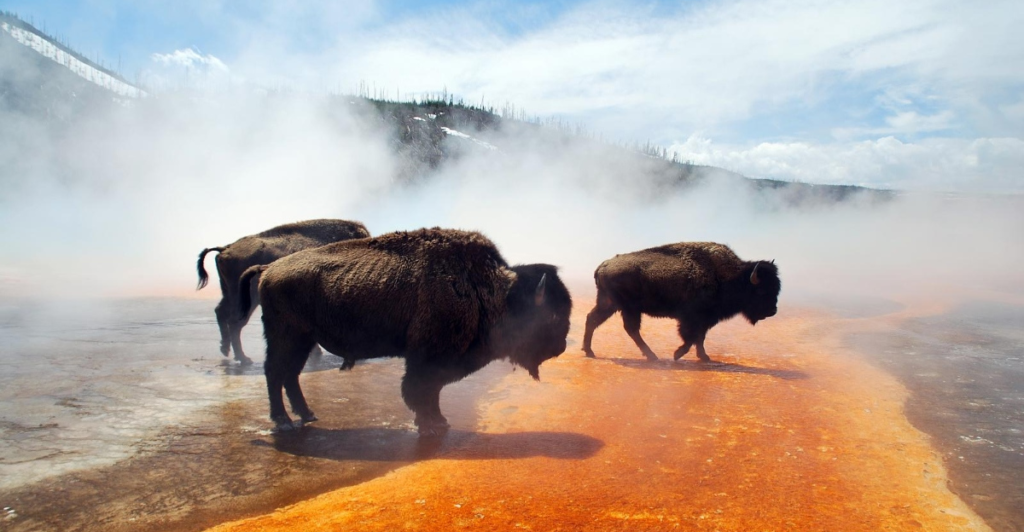
Yellowstone National Park is the only place in the United States where Bison have lived continuously since prehistoric times. This area is well-known for its Bison population and can make for an incredible sight on your next outdoor adventure. These Bison are descendants of the vast herds that once roamed North America, numbering between 30 and 60 million. However, by the late 19th century, their numbers dwindled to just a few dozen due to overhunting and habitat loss.
Near Extinction and Conservation Efforts
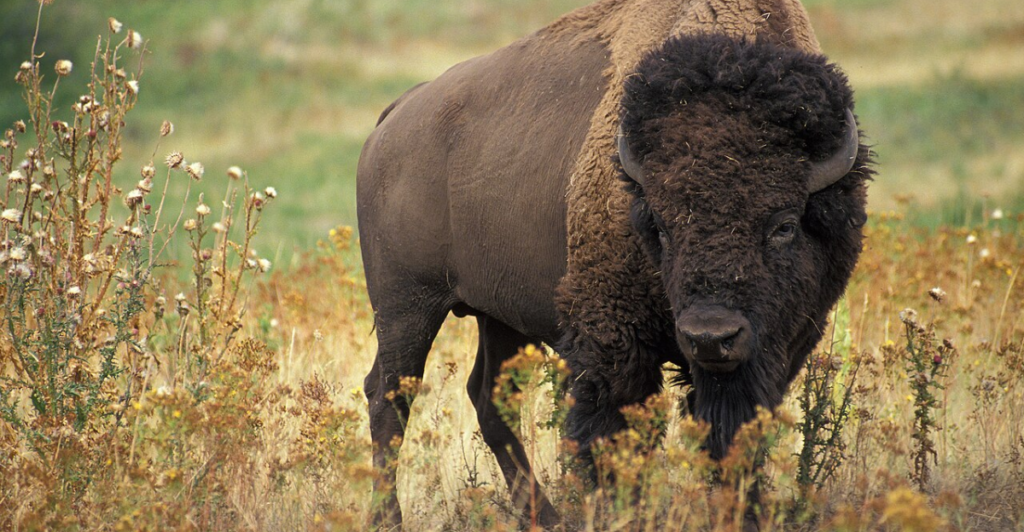
During the late 1800s, it was an extremely harsh period for Bison as the U.S. Army actively eliminated Bison as part of a campaign to control Native American tribes reliant on them for sustenance. By 1902, only about two dozen Bison remained in Yellowstone’s Pelican Valley. Conservationists quickly realized that these remarkable animals would be lost for good if they didn’t act immediately.
Recognizing the urgency of preservation, park managers purchased 21 bison from private ranches and established the Lamar Buffalo Ranch. This effort marked one of the first successful wildlife conservation initiatives in the United States. Over time, these introduced Bison, intermingled with Yellowstone’s native population, leading to a remarkable recovery.
Cultural Significance to Native Tribes
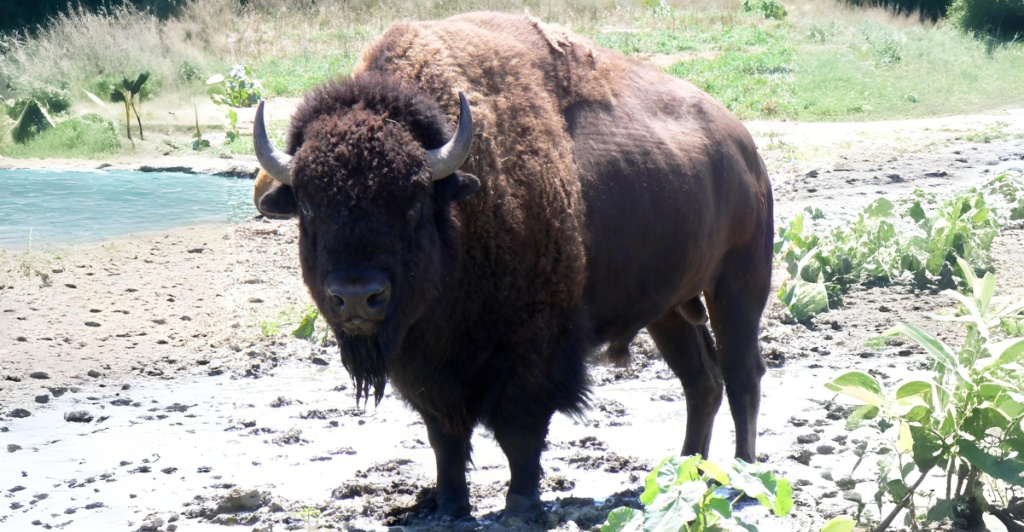
Native American tribes have seen Bison as sacred for thousands of years and have been intertwined in their way of life and belief systems. Every part of the Bison served a purpose—providing food, clothing, shelter, tools, and ceremonial items. The near extinction of Bison during the 19th century deeply impacted Indigenous communities.
Today, efforts are underway to restore Yellowstone bison to tribal lands as part of cultural revitalization programs. These initiatives aim to reconnect Native communities with ancestral traditions while promoting sustainable wildlife management.
Ecological Importance of Bison
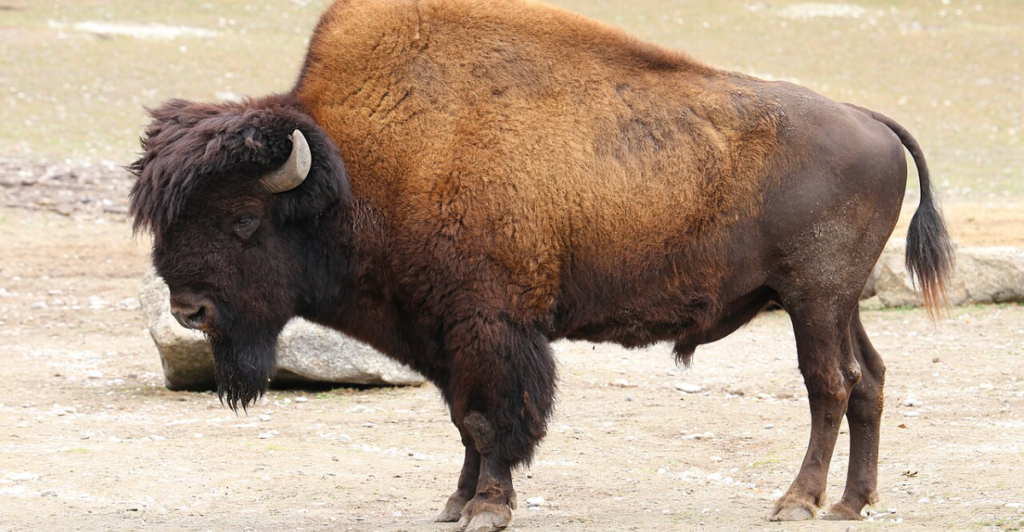
Bison aren’t just sacred creatures in the area; they serve quite the purpose in the delicate ecosystem around them, making them an integral part of the habitat. Their grazing patterns stimulate plant growth and maintain biodiversity by preventing any single species from dominating the landscape.
Their migration habits create nutrient-rich pathways that benefit other wildlife species. It might seem like a small impact, but without these remarkable creatures, the fauna and flora balance would completely change, making it hard for some species to thrive in the area.
The Role of Yellowstone in Bison Recovery
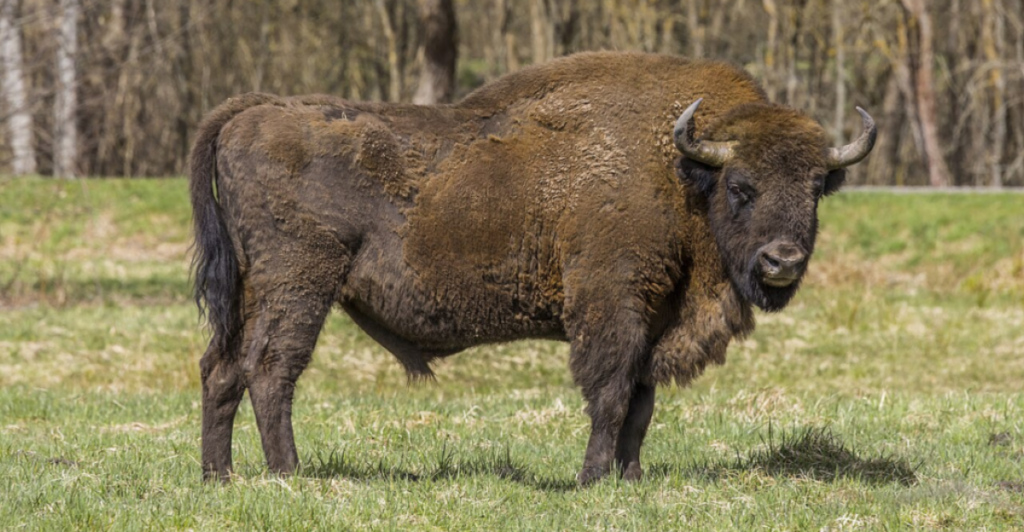
Yellowstone National Park has been integral to the recovery of the Bison species in the United States. Established in 1872, this national park quickly became a safe haven for many animal species, including Bison, which were on the brink of extinction. Through careful management practices such as culling and relocation, park authorities have ensured that Yellowstone’s bison population remains healthy and genetically diverse.
The park became a sanctuary for wild Bison, protecting them from threats such as hunting and habitat loss while enabling them to relearn migration routes and thrive in their natural environment. Yellowstone continues to lead innovative recovery programs like the Bison Conservation Transfer Program (BCTP), which relocates disease-free Bison to tribal lands rather than sending them to slaughter.
Managing Population Growth
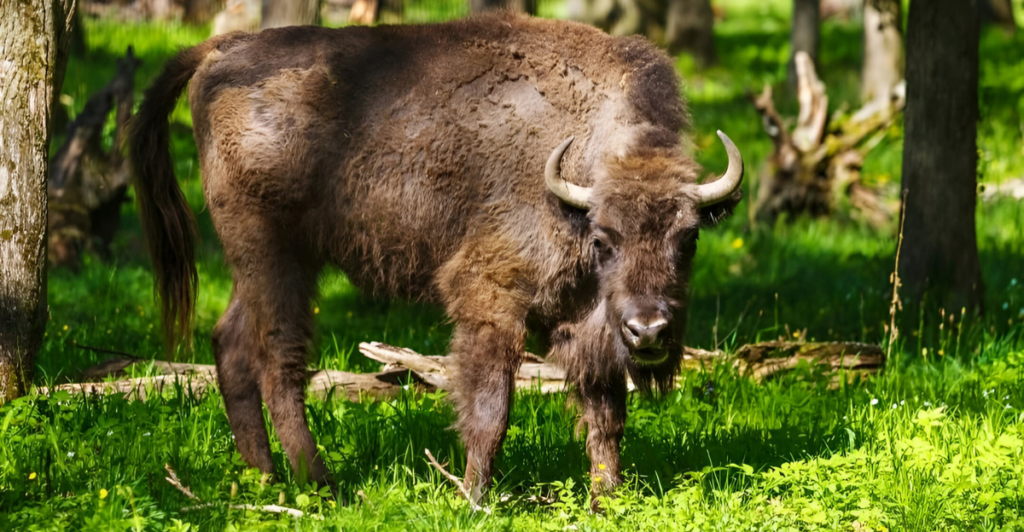
While Yellowstone’s bison population has rebounded significantly, fluctuating between 4,000 and 6,000 animals, this growth presents new challenges. The limited winter range within the park forces many Bison to migrate beyond its boundaries in search of food. However, tolerance for their presence outside Yellowstone is low due to conflicts with agriculture and land use policies.
Population control measures include culling, hunting programs, and transferring disease-free Bison to Tribal lands through the Bison Conservation Transfer Program (BCTP). Culling remains controversial due to its impact on herd demographics and genetic diversity, but it is necessary to prevent overpopulation and ensure ecological balance. Hunting opportunities outside the park provide another method of reducing numbers while respecting Tribal traditions.
The Rare White Bison
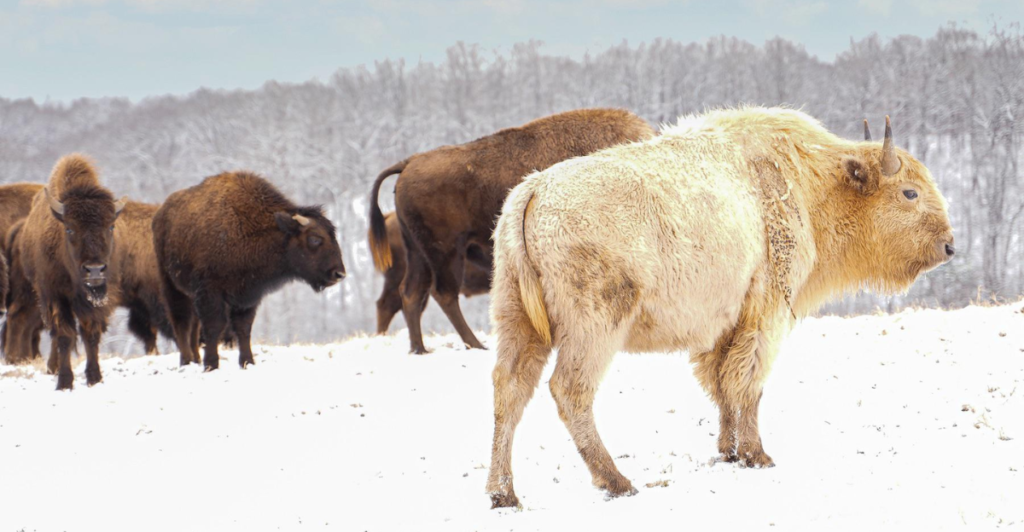
Occasionally, rare white bison sightings occur in Yellowstone, a phenomenon steeped in Native American prophecy. These animals are believed to symbolize renewal and harmony between humans and nature. In June 2024, a white bison was born, which sparked the conversation.
“The prophecy of the White Buffalo Calf Woman [shows] that we are at a crossroads. It’s up to every one of you to make it happen for the future of our children. We must come together and bring that good energy back.” said Chief Arvol Looking Horse, a Lakota spiritual leader.
Seasonal Migration Patterns
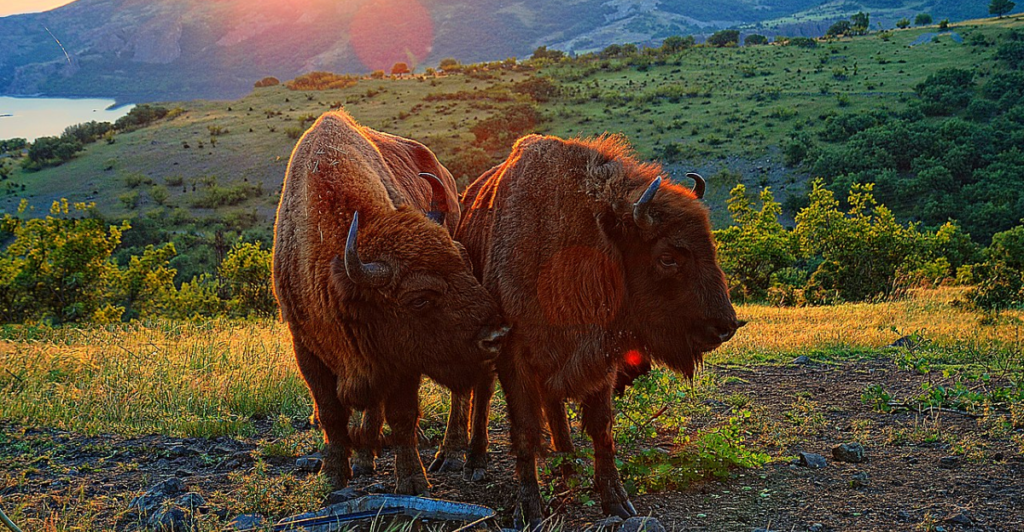
Yellowstone’s Bison exhibit extraordinary seasonal migration behaviors, traveling up to 70 miles between summer and winter ranges. During the warmer months, Bison ascend to higher elevations, such as the Lamar Valley and Hayden Valley, where lush grasslands provide ample forage. As winter approaches and snow accumulates, they migrate to lower elevations like the Gardiner Basin and West Yellowstone areas to access food more efficiently.
Their grazing intensity influences the timing of spring green-up, essentially resetting plant growth cycles to ensure nutritious forage availability. NASA satellite imagery has shown that grazed areas experience prolonged plant growth compared to untouched regions. These movements also connect various ecosystems within Yellowstone, creating corridors that benefit other wildlife species.
Genetic Diversity in Yellowstone Bison
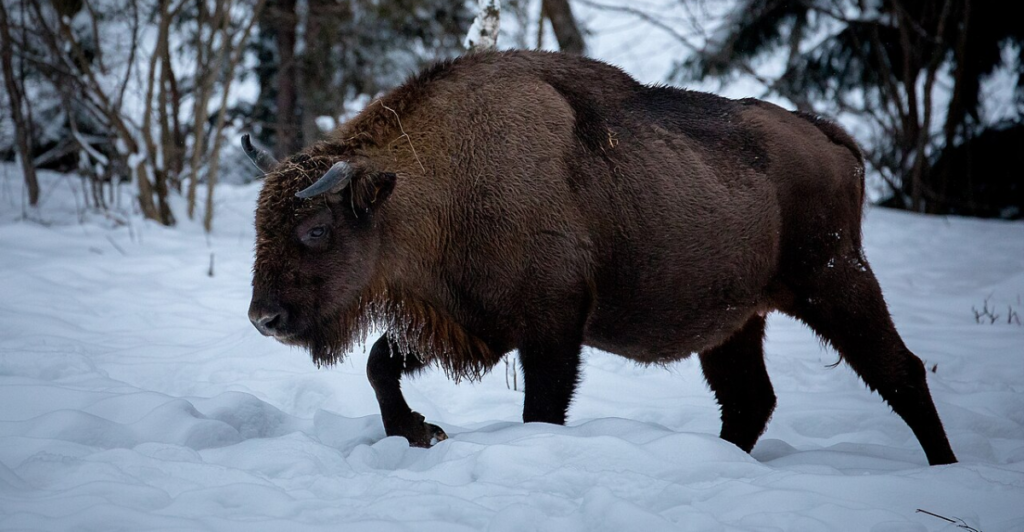
This herd is one of the few remaining populations of plains bison that have continuously existed in their natural habitat since prehistoric times without evidence of cattle hybridization. Genetic studies reveal that Yellowstone bison possess nuclear and mitochondrial diversity, crucial for their adaptability and long-term survival.
This gene flow ensures robust genetic health, reducing risks associated with inbreeding and enhancing resilience against environmental pressures. The presence of multiple genetic lineages also underscores the success of early conservation efforts, which not only saved Bison from extinction but helped restore their genetic integrity.
Sustaining Yellowstone Bison
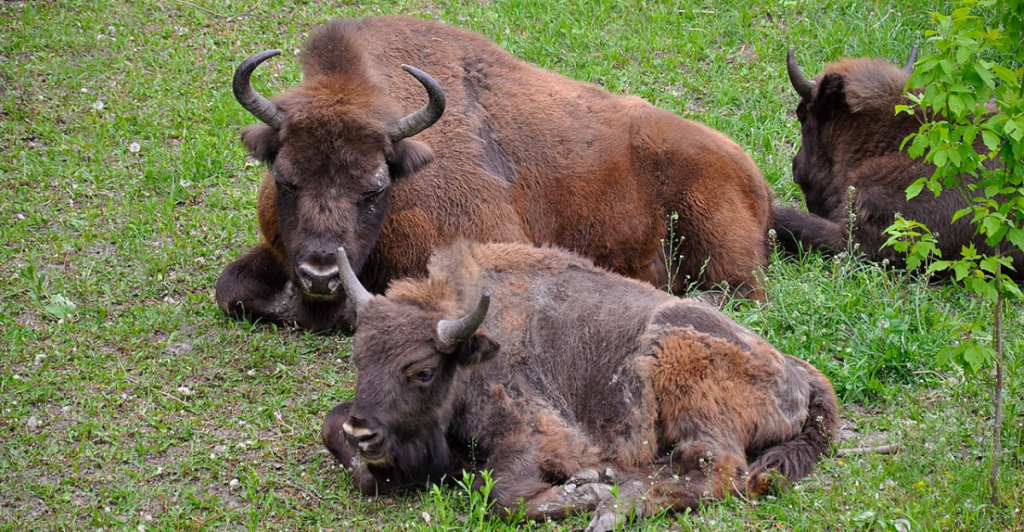
The National Park Service (NPS), in collaboration with federal, state, and tribal partners, employs strategies outlined in the Interagency Bison Management Plan (IBMP). This plan aims to maintain a sustainable population of 3,500–6,000 bison while addressing challenges like brucellosis transmission to cattle and limited tolerance for Bison outside park boundaries.
This program reduces the number of Bison sent to slaughter and reconnects tribes with their cultural heritage by restoring bison populations to their ancestral habitats. The NPS is also exploring alternative management strategies through updated environmental impact statements. These include expanding hunting opportunities outside park boundaries and increasing the transfer of disease-free Bison to reduce lethal removals.
Explore more of our trending stories and hit Follow to keep them coming to your feed!

Don’t miss out on more stories like this! Hit the Follow button at the top of this article to stay updated with the latest news. Share your thoughts in the comments—we’d love to hear from you!







